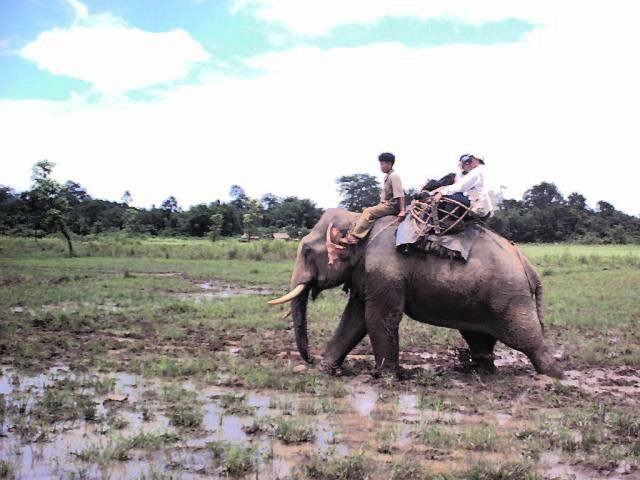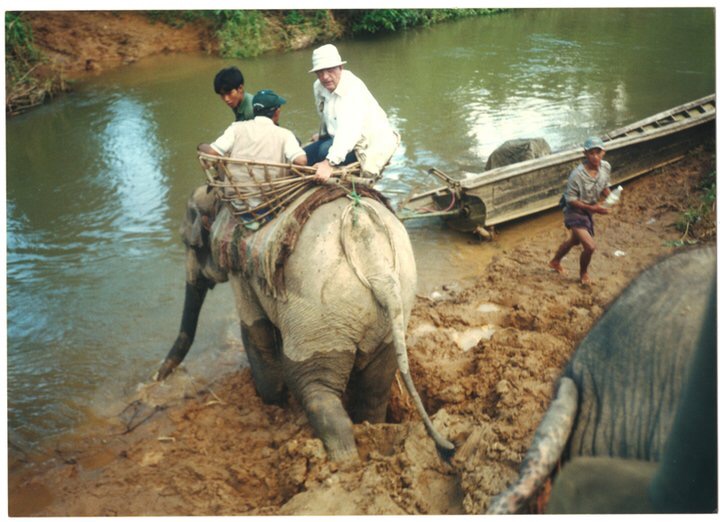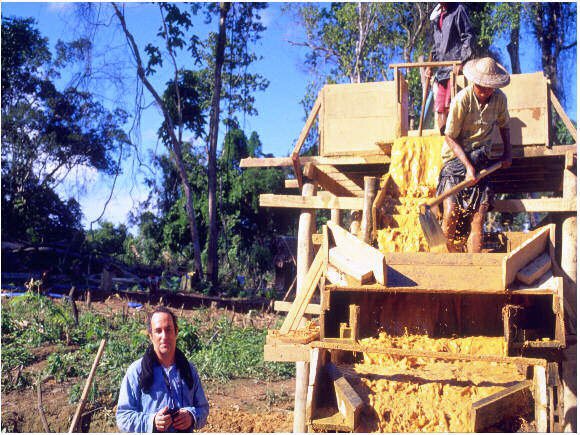Spinels In Medicine Harbor
Sometimes it’s good to remember the old days. Back in 2001, even though it was the dawn of the new, modern century, Burma was still relatively isolated. There were few tourists, mining was mostly done by traditional methods, and transportation was crude. Here’s an account of our first trip to Namya…
We didn’t know where we were going. With no official maps, we had to put our faith in the hands of our guide. Frantic GPS sessions were taking place near every small village on the way. We did try to get the names of these villages from our driver but, in Burma, all names are in the mouth of the beholder. In a country where so many dialects are spoken, one cannot expect names to sound the same.

What we did know was that we were on either the Myitkyina (Micheena) or the Hpakarnt (Fhackam) trail, and that there would be elephants waiting for us at an obscure café in Namyaziek. Sure enough, we finally came across a large green and white signpost welcoming us to Namya. And sure enough, the elephants were at the café. It should be noted that it was not difficult to find the café because the town was small, and only one café had elephants lurking about. According to our hosts, we had arrived at Namyaziek. “Namya” – which in the Shan language means medicine – and “ziek” – the Burmese word for harbor.
So there we were, at Medicine Harbor, on our way to the northern part of Namya. It took us nearly three hours to trudge across deep muddy fields, on the backs of the strong and patient elephants, and reach the first village of Zeibu. Situated on a low hill, in that early afternoon, the village was nearly silent. All we could hear was a remote, hissing sound – the mud pumps.

According to the “The Mineral Resources of Burma” by N.M Penzer (1922):
The tract was first examined by Warth inn 1895. He estimates that the actual area over which the gems are found in the alluvial deposit was 10 square miles only. He stated that rubies, sapphires, and spinels are obtained from the detritus afforded by the disintegration of crystalline limestone surrounded by intrusive masses of granite. The most recent and the fullest description of this tract was given by Bleeck in 1908. He described the geological features of the country between Manwee (few miles NE) and Naniazeik as being of a simple nature, the mountain ranges between the two villages consisting only of granite and marble. At the foot of the hills the alluvial soil is consists of the detritus of both the granite and marble. This detritus is called “byon” wherever it is rich in rubies. Samples of the river gravel and the ” byon” examined by Tanatar and Bleeck were taken from both the mountain stream near Manwee and at Naniazeik. The constitute minerals of gravel from the former locality proved to be quartz, feldspar, phlogopite, chlorite, garnet, spinel and corundum. Of the above, the most abundant are the spinels which occur in octahedral crystal crystals up to ½ ” is diameter. The colors of the Spinel vary with the pellucidity from almost an opaque dark green to bright translucent red. The Corundum occurs in far smaller quantities. Bleek found three pieces one of which was nearly ¾” in diameter. The color of this stone was dull pink while the two smaller pieces displayed bright and dark red colors respectively. The byon at Naniazeik is a light color clay or send, consisting of the following minerals: quartz, orthoclase, pholgopite, chlorite, calcite, plagioclase, spinel and ruby.

The operations in the area had started just a few months earlier [in early 2001]; there had been no mining in Namya since the British occupation. As well, it appeared that there was no serious exploration before the actual mining took place. Methods and structures of the production areas revealed that cautious investors were simply trying out their luck. We could not get any reliable numbers regarding the quantities being mined, but we deduced that there are no commercial quantities. We did, however, see some of the spinel being mined in the area. It was a bright hot pink and, unlike the material from Mogok, quite consistent in its color. Namya material is fetching a very high price in Yangon these days; in our estimation, at least three times as high as the Mogok material.

It looks like investors are trying to recuperate their initial capital as fast as they can. Due to the logistics of both reaching Namya and mining in the area, mining costs versus the quantities found are pushing prices even higher. True, Burma is one place where fortune-telling is an ordinary, daily practice; however, forecasting this future is a challenge. But, in accordance with our experiences in the past, market demand will always dictate the scope of mining operations. The spinel’s popularity is now at an all-time high, and so it is safe to predict that the Namya area, once the experimental gambling stage has been passed, will be an important source for high quality spinels and rubies.

Bangkok, October 2001
So, how did our predictions play out?
In the next year, 2002, Vincent Pardieu returned to Namya and stated that “about twenty companies were mining”. He also wrote that, in 2004, Richard Hughes reported that mining in the area had decreased significantly. In 2009, the Asia Area Report from the US Geological Survey relayed that “production of semiprecious stones, such as spinel, decreased by 48.1% in 2009 compared to production in 2008”. And in 2011, an OECD report on Myanmar noted that mining continues in six areas of the country, including “Namya in Kachin state”. [CG1]
[CG1]I added this but I think it should be deleted as it adds no value and is depressing.
